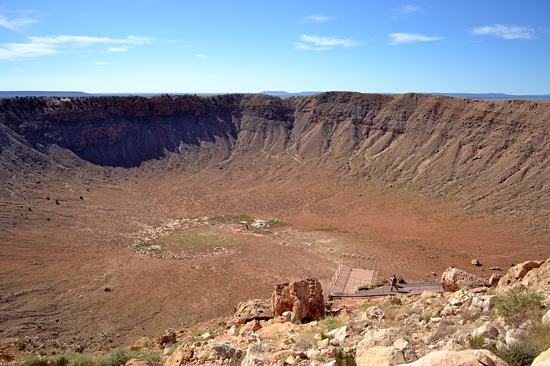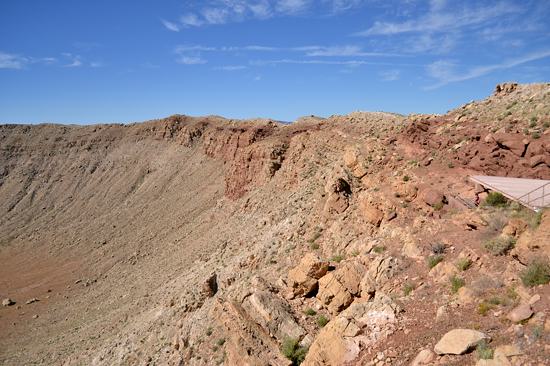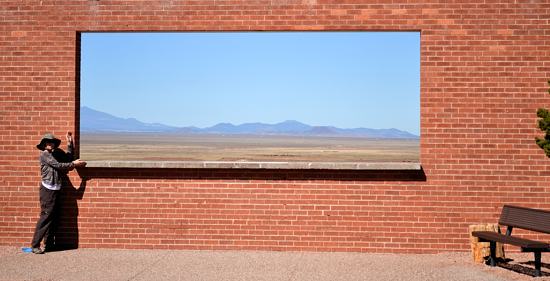
What do you get when you take a 150 foot ball of iron-nickel alloy and hurl it at the dry Arizona desert at 26,000 mile per hour? You get the best preserved meteor impact site on Earth known as Meteor Crater Arizona. While there are a few more proven meteor impact sites on Earth, none is as well preserved as Meteor Crater. In fact, it is so authentic to craters on the moon that NASA actually came here in the 1960’s to train Apollo astronauts for their lunar excursions.
Meteor Crater is located about half way between Flagstaff and Winslow Arizona and just 5 miles off of I-40. Because it is on private land, it is rather expensive at $15 for each adult ticket, but it is worth seeing (Use your AAA card to get $2 off per person). The land where the crater sits is owned by the Daniel Moreau Barringer family of which Daniel Barringer was the first person (in 1902) to assert that the crater was formed by a meteor impact. Most scientists at the time believed it was formed by a volcanic vent, but they were later proven incorrect when Barringer found iron and nickel fragments there.
The largest yet discovered iron nickel fragment from the crater is on display at the visitors center and made almost completely of metal. While this fragment is the size of a fairly large rock you would put in your garden that may weight around 400 pounds or so, the Berringer meteorite weighs an impressive 1,400 pounds. It is hard to believe when you see it up close that a ball of steel actually fell from the sky, but the crater is actually the most impressive thing you will see at Meteor Crater. It is almost a mile across, 2.4 miles in circumference and more that 500 feet deep not counting the crater walls. You could place 20 football fields on the floor of the crater and then have 2 million people line the walls to watch the games. That how massive this crater is, yet it pales in comparison to many craters on the Moon and Mars.
For scale, look at the center right of the photo and you can see a woman under the light salmon colored roof:

If you are wondering about ever getting hit by a meteor, the chances are exceptionally slim. In fact, there is only one documented case in history of a human being getting struck by a meteor and that happened to an Alabama woman in 1954. A depiction of that case is on display at Meteor Crater.
While the cost of getting into Meteor Crater is a bit expensive being that it only takes you about 2 to 3 hours to see the crater and all the exhibits, it is very educational. The visitors center is loaded with lots of scientific exhibits and interactive displays. You can also watch a 15 minute movie that explains all the science and history behind what happened at this unique spot on Earth.
You don’t need to go all the way to the moon to see a real meteor impact site, you can check one out at Meteor Crater Arizona.
Looking north from Meteor Crater. Is Jean holding a picture, or is it real?

Tags: Destinations
